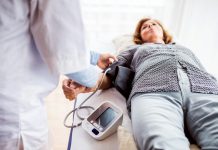
Heart rhythm disorders can be terrifying and deadly, but new research from The Ohio State University is providing hope for better treatment options.
The study, led by assistant professor Przemysław Radwanski, focuses on a protein called calmodulin, which plays a critical role in regulating our heartbeat.
The Importance of Calmodulin in Heart Function
Calmodulin is a protein that exists in various organs, including the heart. Within the cardiac context, it regulates the flow of charged sodium and calcium particles in and out of heart muscle cells.
This regulation ensures a steady and rhythmic heartbeat. It also contributes to the electrical activity picked up by electrocardiograms, which monitor heart function.
What Are Calmodulinopathies?
Scientists have recently identified that mutations in calmodulin can lead to severe heart rhythm disorders, known as calmodulinopathies.
These disorders can be fatal, and effective treatments are currently scarce, primarily due to a lack of understanding about how these mutations lead to arrhythmias.
Unveiling the Mystery of Mutated Calmodulin
The research team from Ohio State University took a closer look at mutations in calmodulin, particularly a mutated form known as D96V-CaM.
They discovered that this mutation enhances the flow of sodium ions in heart muscle cells, leading to an abnormal release of calcium ions and contributing to arrhythmias.
Potential Treatment Avenues
Understanding this mutation’s specific impact on sodium channels provides a vital foundation for developing new treatments.
The team used a genetically engineered mouse model to discover that the mutated form of calmodulin affects a sodium channel known as NaV1.6, but not the more common NaV1.5 channel in heart muscle.
This could pave the way for targeted therapies that could help not only those with calmodulin-related disorders but also those with other types of arrhythmias.
What This Means for Patients
“This study represents a significant breakthrough in our understanding of calmodulin mutations,” said Radwanski.
“Our aim is to discover treatments that can prevent arrhythmias stemming not just from calmodulin mutations but also from abnormal sodium-channel function in general.”
These findings offer the hope of new treatments for managing severe heart disorders that currently have no cure.
By better understanding the complex interactions within heart muscle cells, scientists are getting closer to helping those who suffer from these life-threatening conditions.
The study has been published in the Journal of Clinical Investigation, and it marks a significant step in understanding how to treat heart arrhythmias effectively.
For anyone concerned about heart health, this research brings hope for more effective, targeted treatments in the future.
If you care about heart health, please read studies about better treatment of irregular heartbeat and how much should you worry about that ‘extra’ heartbeat.
For more information about heart disease, please see recent studies about hormones that may reduce inflammation, irregular heartbeat, and results showing a simple way to reduce irregular heartbeat problems.
Follow us on Twitter for more articles about this topic.
Copyright © 2023 Knowridge Science Report. All rights reserved.



